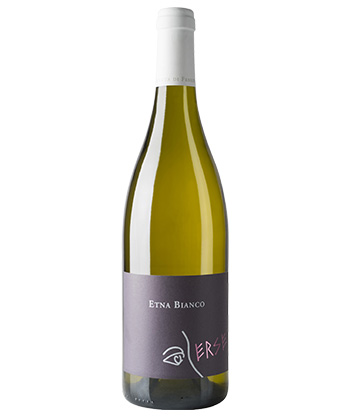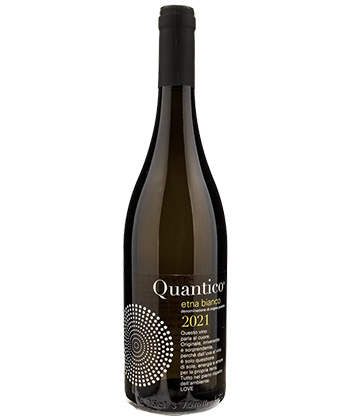To understand the volcanic wines of Sicily, it helps to spend some time on the colossus of the island, Mount Etna. The great volcano — the highest and most active in Europe — towers over Sicily at almost 11,000 feet and is visible from just about every vantage point.
Its not infrequent eruptions, including the latest this summer, are a reminder of both its power and its influence over human and all other forms of life here, including the vineyards that arc around Etna’s north, east, and south slopes.
As you trek up and down the volcano’s barren landscape, you come across jagged fields of hardened magma, some of it deposited just months ago and still hot to the touch. Much farther down the slopes, the passage of time — hundreds and thousands of years — has transformed the rocks into the mineral-rich soils that inform the vineyards and the wines of Etna.
In some places, lava has buried vineyards over the years. In others, it has flowed right next to them but spared them, serving as a dramatic reminder of the monumental role the volcano plays here. Vineyard owners and winemakers often cite the lava to mark place and time, one pointing out that his vineyard “is on the other side of the lava flow of 1911.”
Marco de Grazia, a leading figure in Etna wines and owner of Tenuta delle Terre Nere, cites Etna’s “extraordinary diversity” of soils, climates, and altitudes as what makes the region’s wines so distinct. “This is an area where you can plant, in the DOC, between 400 and 1,000 meters,” he says. “That’s 600 meters in altitude of diversity. Fifty is big. No other appellation has this.”
Today, Etna wines themselves are exploding both in production and popularity. Vineyard areas almost doubled between 2013 and last year, according to the Etna DOC consortium; there are more than twice as many producers; and bottles of Etna DOC wines went from about 1.5 million produced a year to almost 6 million, with the white wines, the Etna Biancos, seeing the most growth in the last few years.

Clearly, the complex, mineral-driven wines that show plenty of texture and not-over-the-top alcohol levels are striking a chord. But why?
“This is a mystery,” says Michele Scammacca del Murgo, an owner of the Murgo winery and its winemaker. “But I think maybe that people are starting to be a little bit tired of drinking wines with long aging in wood that are always the same and not so interesting. Many wines are a little bit boring, they have the same taste from the beginning to the finish. And when you think of wine like Etna, there is a high complexity.”
The red wines, made largely on the cooler north slope of Etna from the Nerello Mascalese grape, are better known and still lead in production. (You can read about some top Etna Rossos I reviewed earlier this year.) But there is a growing emphasis on the cool-climate white wines, which I focused on during a visit to Sicily this month, tasting a broad sampling and visiting a number of vineyards and wineries at the invitation of the Etna wine consortium.
The main white grape of the Etna Bianco DOC is Carricante, which must make up at least 60 percent of the blend. The only other white DOC is Etna Bianco Superiore, which is limited to the Milo area on the east slope of Etna, where Carricante must be 80 percent. It’s often blended with Catarratto, which is used to give the wines more body.

The east slope — facing the Ionian Sea — is considered the best area for Carricante, which is grown up to 900 meters above sea level. It’s the side of the mountain most exposed to rain and winds, which contribute to the fresh, high-acid, and savory character of the wines. (Etna’s wine-growing regions are further defined by the “contrade,” small sub-areas that will often appear on labels of the better wines.)
Etna Biancos are also marked, of course, by the signature minerality of the Etna terroir, which I often noted as a chalky texture, and by a subtle and intriguing touch of salt, a grace note that further distinguishes them and adds to their complexity.
Stylistically, the wines vary. They are typically fermented and aged in stainless steel tanks. Salvino Benanti, co-owner of the well-known winery that bears his name, describes his “house style” of Carricante as “pure” and “clean” with typical floral, citrus, apple, and mineral notes that take on flint and petrol qualities over time. “We achieve that through lees aging and through bottle aging,” he says. “I think Carricante is a grape that is very age-worthy.”
But some winemakers are taking a different approach, using oak aging to produce softer, rounder wines.
Among them are Giulia Monteleone and her husband Benedetto Alessandro, owners of the Monteleone winery. “The most classical idea about Carricante is to make a very simple vinification in stainless steel,” Monteleone says.
But since 2018, she and Alessandro have been aging their Etna Biancos in French oak tonneaux, the medium-sized barrels that will impart less aggressive wood tastes than the standard, smaller-sized barriques. Monteleone says it was an “extreme decision,” made during the harvest of 2018, a rainy and cold vintage that produced grapes they considered too acidic and citrusy. “In our opinion using some oak let us obtain more balance in the wine.”
Balance, subtlety, and complexity — they are the hallmarks of the best Etna Bianco wines. And while their soul may derive from the explosive force of the great volcano, the wines themselves are less about power and more about elegance and restraint. They are among the more interesting wines you’re likely to taste.
Here are 10 Etna Biancos to try:
Graci Etna Bianco 2022

From the north slope of Etna, this blend of 85 percent Carricante and 15 percent Catarratto is a lovely, refreshing wine with aromas and tastes of citrus and white stone fruit. There’s a tangy orange note on the finish, along with saline and a steely minerality. A great pairing for broiled flounder or sole filets with butter and lemon.
Price: $34
Buy This Wine
Murgo Etna Bianco 2022

You won’t find a better-value Etna wine by the glass than this one, which is just how I ordered it as I wandered into a wine bar for a nightcap. They were pouring it at an unheard of (in the U.S.) $5 or so a glass. It’s Murgo’s entry-level Etna Bianco and is a good alternative to Chardonnay with apple and lime notes and a creamy layer. It’s 70 percent Carricante and 30 percent Catarratto and was just right on a warm, late-summer night.
Price: $20
Buy This Wine
Barone di Villagrande Etna Bianco Superiore 2022

From Milo on the eastern slope of Mount Etna, this one is full of floral, herbal, and citrus notes. Orange and grapefruit, white peach, and almond flavors are framed by typical Etna minerality and salinity. At under $25, it’s one of the best values for an Etna Bianco Superiore.
Price: $22
Buy This Wine
Monteleone Etna Bianco ‘Anthemis’ 2021

Beautiful balance with a citrus core, subtle almond and flint notes, and a good deal of saline. Still very young, the oak influence is well integrated and could serve as a model for not overdoing it. It reminded me of a young Burgundy with years ahead of it. The phenomenal 2018 vintage, which I also tasted, gives a hint of what’s to come with its roundness and depth.
Price: $47
Buy This Wine
Salvo Foti Etna Bianco Superiore ‘Vigna di Milo’ 2020

From a pioneer of Etna wines, this is a beautiful and refined Etna Bianco with just the right acid balance to support the fruit. It has a fine mineral texture that underlies apricot, white peach, pink grapefruit, and lemon flavors. There’s also an almond touch. Like so many Etna whites, this is a sipping wine rather than a quaffer.
Price: $43
Buy This Wine
Tenuta delle Terre Nere Etna Bianco ‘Santo Spirito’ 2022

From a single vineyard, this is what owner Marco de Grazia calls the equivalent of a premier cru-level wine in Burgundy. It’s a nervy, 100 percent Carricante aged in barrels with stone fruit flavors, a well-integrated cream layer, and a zippy lime note on the finish. A wine you could drink (in small sips) all night long. Also worth trying: Tenuta delle Terre Nere’s 2022 Rosato, another delicious wine that stands well above the oceans of insipid rosé out there.
Price: $38
Buy This Wine
Benanti Etna Bianco Superiore ‘Contrada Rinazzo’ 2020

There’s exceptional balance in this wine, with bright citrus, floral, and almond flavors and a hint of eucalyptus. Extended lees aging softens it, providing a creamy layer. A fine mineral texture underlies the fruit notes. Like many of these wines, the alcohol level is moderate at 12.5 percent, and the flavors really emerge as it warms up a bit.
Price: $60
Buy This Wine
Tenuta di Fessina Etna Bianco ‘Erse’ 2022

From 90 percent Carricante and 10 percent Catarratto, this well-priced wine spends six months on the lees. Jacopo Maniaci, one of the partners, says he wants to make a “classic” Etna Bianco but “a little bit rounder.” He achieves that with six months of lees aging. There’s the tartness of green apple and lime but also some tropical fruit notes, ending with a typical saline touch on the finish.
Price: $26
Buy This Wine
Quantico Etna Bianco 2021

A softer interpretation of Etna Bianco that receives 10 months of lees aging. Grapefruit and stone fruit flavors dominate with a creamy finish from the lees contact. As with many Etna wines, the grapes are grown organically. The vines are up to 80 years old.
Price: $32
Buy This Wine
Tenuta Tascante Etna Bianco ‘Buonora’ 2022

This is another excellent-value Etna Bianco, made from 100 percent Carricante. A spiciness accents the pear and lime flavors. With its typical minerality, it’s a classic Etna Bianco. The winery was established in 2007 on the cooler north slope of Etna. Tascante, by the way, is a portmanteau of Tasca, the name of the family that owns the winery, and Etna.
Price: $25
Buy This Wine
